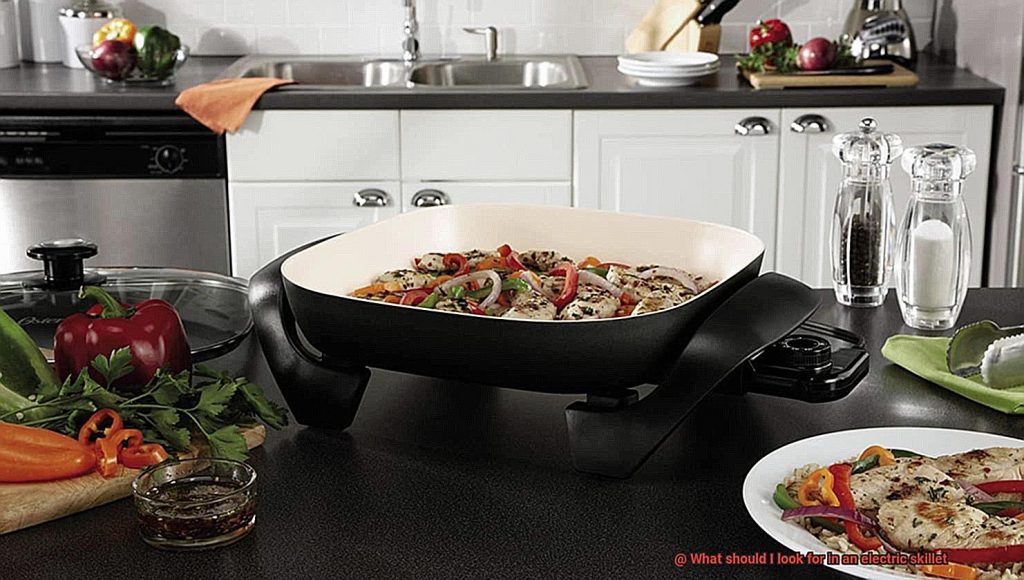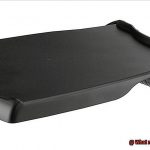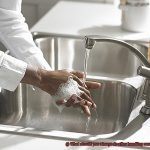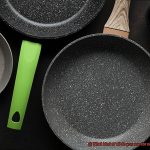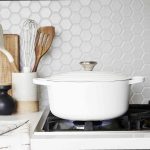Are you tired of spending hours in the kitchen cooking up a storm? Well, an electric skillet might just be the solution to your culinary woes. With its convenience and versatility, an electric skillet can help you whip up delicious meals in no time.
However, with so many options available in the market, finding the perfect electric skillet can be overwhelming. But don’t fret. We’re here to guide you through the process and help you make an informed decision.
In this post, we’ll explore what factors you should consider when looking for an electric skillet. We’ll cover everything from size and shape to material and features that will affect its performance.
We understand that everyone’s needs are different, whether you’re cooking for a large family or need a compact solution for your apartment. That’s why we’ll discuss how each factor plays a role in choosing the best electric skillet for your specific needs.
So sit back, relax, and let us take you on a journey to find your ideal electric skillet. We’ll provide tips on temperature control, non-stick coating, and dishwasher-safe parts that will make your cooking experience more manageable.
By the end of this post, you’ll be equipped with all the knowledge necessary to choose an electric skillet that aligns with your needs. So let’s get started on picking out the perfect electric skillet for you.
Contents
Non-Stick Surface
Imagine, no more food stuck to the bottom of the pan, no more difficult cleaning, and no more frustration. But not all non-stick coatings are created equal. Let’s explore the two most popular options: Teflon and ceramic.
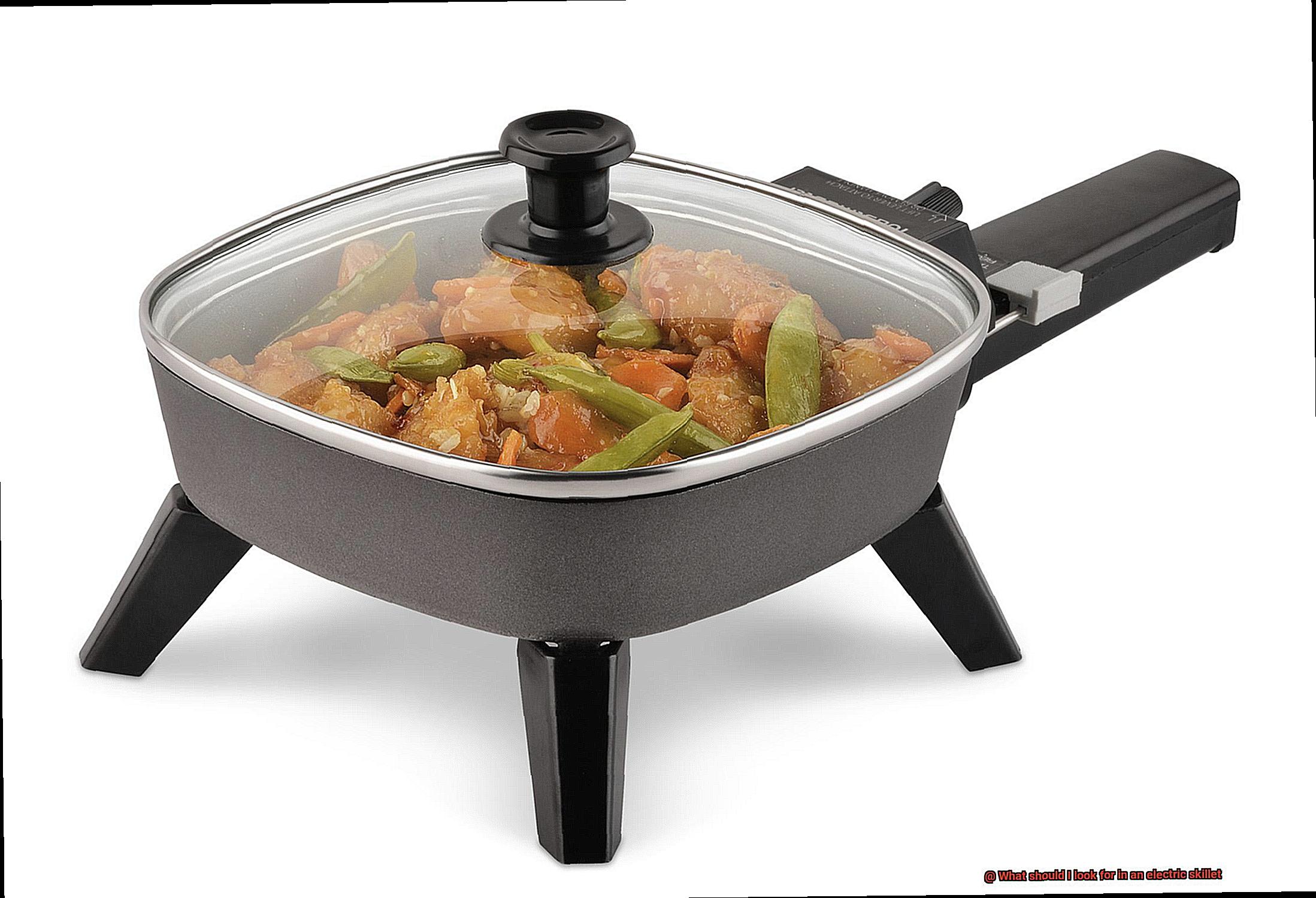
Teflon has been around for decades and is known for its excellent non-stick properties. However, there have been concerns about the safety of Teflon when heated to high temperatures. When overheated, Teflon can release toxic fumes that can be harmful to humans and pets.
Ceramic non-stick coatings, on the other hand, are made from inorganic materials and are considered safer than Teflon. They’re also durable and scratch-resistant, which makes them perfect for electric skillets. Ceramic coatings distribute heat evenly, ensuring your food cooks evenly without hot spots.
When choosing between Teflon and ceramic non-stick coatings for your electric skillet, consider your cooking needs and preferences. If you’re looking for a coating with excellent non-stick properties that has been around for decades, Teflon might be right for you. However, if you’re concerned about safety and want a durable coating that distributes heat evenly, ceramic might be the better choice.
But regardless of which non-stick coating you choose, it’s important to take care of it properly. Avoid using metal utensils on the surface as they can scratch and damage the coating. Follow the manufacturer’s cleaning instructions carefully to ensure that the coating remains intact and lasts for many delicious meals to come.
Size
An electric skillet may be the solution to your kitchen woes. But before you make a purchase, it’s essential to consider the size factor. As an expert on size, I can help guide you through the process of choosing the perfect electric skillet for your needs.
Firstly, think about your serving size. If you’re cooking for one or a small family, an 8-inch skillet may suffice. However, if you’re a frequent entertainer or have a large household to feed, a 16-inch skillet would be more suitable. The right size ensures that everyone gets a perfectly cooked meal in one go.
Storage space is another crucial factor to keep in mind. A smaller skillet can fit easily into a cabinet or shelf, while larger ones may need to be stored on a countertop or pantry. Consider the amount of storage space you have available before making your purchase.
Additionally, the size of your cooktop or countertop plays a significant role in choosing the perfect skillet. You don’t want your skillet taking up too much space and hindering your ability to cook other dishes simultaneously. Measure your cooktop or countertop and ensure that the skillet you choose fits comfortably without overcrowding.
Lastly, don’t forget about versatility. A deeper pan with higher walls is ideal for roasting and frying, while a shallower pan is better suited for sautéing and stir-fry dishes. Consider what types of meals you’ll be preparing most frequently and choose accordingly.
Temperature Control
That’s why when looking for an electric skillet, you need to pay attention to this crucial factor. Let me take you through the important features to consider.
Firstly, adjustable temperature control is a must-have feature in any electric skillet. It allows you to cook a variety of foods at different temperatures, ensuring that your meals turn out perfectly every time. Whether you’re searing a steak or simmering soup, having the ability to adjust the heat is essential.
Secondly, heat distribution is equally important. You want your food to cook evenly without any hot spots or cold spots. This not only makes your meals tastier but also healthier since you can use less oil. Look for an electric skillet with even heat distribution to achieve optimum results.
Thirdly, the heating element of the electric skillet is another factor to consider. Coil heating elements are more common and heat up quickly, but they can be hard to clean. Flat heating elements are easier to clean but may take longer to heat up. Depending on your preference, choose the one that works best for you.
Lastly, a reliable thermostat is also important. It helps maintain the desired temperature, ensuring that your food cooks evenly and does not burn. A good electric skillet should have a clear and easy-to-read thermostat with accurate temperature markings.
Durability
When it comes to electric skillets, durability is a crucial factor that should not be overlooked. You want a skillet that can handle your cooking skills and last for years without needing frequent repairs or replacements. So, what makes an electric skillet durable? Let’s explore some research notes to find out.
Firstly, the material used to make the skillet plays a significant role in its durability. Stainless steel and cast iron are two of the most durable materials used in making electric skillets. Stainless steel is rust-resistant, easy to clean, and can withstand high temperatures. Cast iron, on the other hand, is renowned for its exceptional heat retention and distribution, making it a popular choice for cooking enthusiasts.
Another factor that affects durability is the coating used in the skillet. Nonstick coatings are prevalent in most electric skillets because they make cooking and cleaning easier. However, nonstick coatings are prone to scratches that can reduce their lifespan. Therefore, look for skillets with high-quality nonstick coatings that are scratch-resistant and long-lasting.
Moreover, the overall build quality of an electric skillet also determines its durability. Check for sturdy handles that can support the weight of the skillet when full and are firmly attached to it. The lid should fit snugly and securely to prevent heat loss and spills. Additionally, the heating element should be well-protected from water and other elements that may cause damage.
Additional Features
If so, then you need to consider the additional features available. These features can make meal prep a breeze and enhance the cooking experience. As an expert in this field, I’ll walk you through the options to help you choose the perfect electric skillet.
First and foremost, let’s talk about non-stick coatings. This feature is a must-have for easy clean-up and preventing food from sticking to the surface. But not all coatings are created equal. Look for high-quality coatings that resist scratches and can handle high temperatures without peeling or flaking.
Next on our list is temperature control. A skillet with adjustable heat settings gives you greater control over the cooking process and ensures that your food is cooked to perfection. Some models even come with precise temperature settings, so you can get the exact heat you need for each dish.
Removable parts are another added convenience to consider. Skillets with detachable lids or bases make cleaning a breeze and also allow for easier storage when not in use. Plus, being able to remove parts means you can take them to the sink for a more thorough cleaning.
Size matters too. Depending on your needs, you may want a larger or smaller skillet. If you plan on cooking for a large family or entertaining guests, a larger skillet may be more suitable. However, if you have limited counter space or only cook for yourself or one other person, a smaller skillet may be more practical.
Finally, let’s talk about accessories. Some electric skillets come with additional add-ons like a steaming rack or griddle plate. These accessories can increase the versatility of your skillet and allow you to cook a wider variety of meals. Imagine being able to cook pancakes on a griddle plate or steam vegetables with ease using a steaming rack.
Heat Settings
Electric skillets offer a variety of heat settings, allowing you to control the temperature and cook different types of food to perfection.
Let’s dive into the four key factors to consider when it comes to heat settings:
Range of Heat Settings
Before purchasing an electric skillet, it’s important to check the range of heat settings offered. Some models only have a few basic settings, while others offer a wider range of temperatures. Consider what types of dishes you’ll be cooking and whether having more temperature options is necessary for your needs.
Adjustable Thermostat
An adjustable thermostat provides precise control over the temperature and ensures that your food is cooked evenly. It allows you to easily switch between different heat settings, making it handy for cooking multiple dishes at once.
Non-Stick Coating
A non-stick coating on the surface of your electric skillet is essential for preventing food from sticking and making cleanup a breeze. Not only that, but non-stick coatings also tend to distribute heat more evenly across the surface of the skillet, resulting in perfectly cooked meals every time.
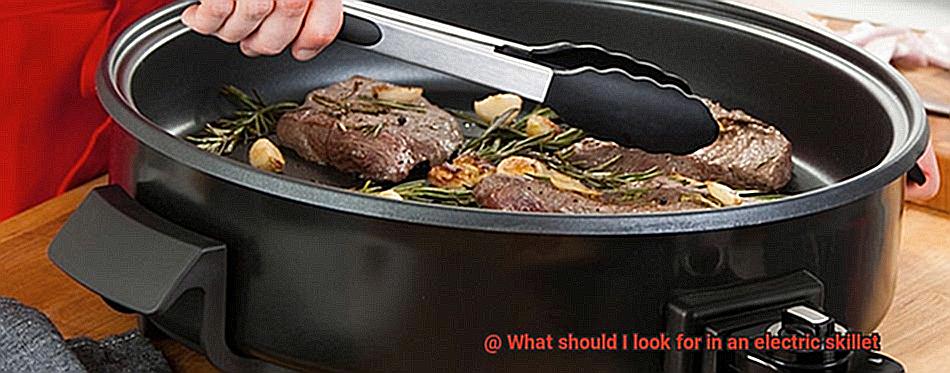
Warming Function
For those who enjoy hosting dinner parties or cooking large meals, a warming function can be a game-changer. It keeps your food warm without overcooking it, making it perfect for serving up delicious leftovers or keeping dishes warm until ready to serve.
Price Range
Firstly, it’s important to assess your needs and usage. If you’re planning to use your skillet frequently and for a variety of cooking tasks, investing in a higher-end model may be worth it for added durability and functionality. However, if you only plan on using it occasionally for simple tasks like pancakes or eggs, a less expensive option may suffice.
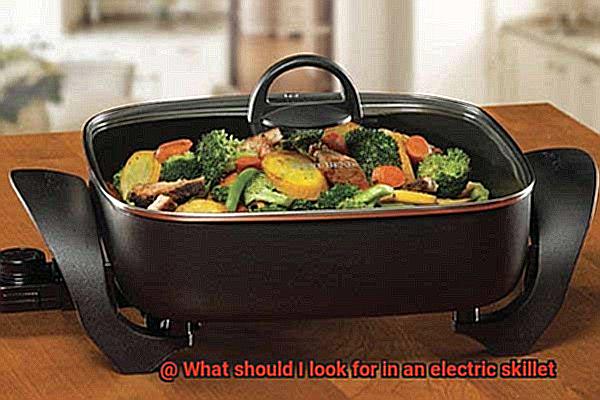
Next, consider the features that are important to you. Basic models can cost under $30 but may lack adjustable thermostats or warming functions. More advanced options with additional features can cost upwards of $100. Create a list of essential features based on your cooking style and prioritize accordingly.
It’s also worth considering the warranty and customer service provided by the manufacturer. A quality warranty can save you money in the long run if any issues arise with your skillet. Reliable customer service can make all the difference when it comes to resolving problems quickly and efficiently.
Warranty
A warranty serves as a form of protection for the consumer in case the product fails to meet expectations or malfunctions. In this blog post, I will delve deeper into why it is essential to consider the warranty when buying an electric skillet.
First off, it is imperative to note that the length and coverage of a warranty can vary depending on the manufacturer and model of the electric skillet. As such, it is vital to read and understand the terms and conditions of the warranty before making any purchase. Some warranties may only cover defects in materials and workmanship, while others may also cover normal wear and tear. Furthermore, some warranties may require you to pay for shipping or repairs, while others offer free repairs or replacements.
Secondly, when evaluating a warranty, it is crucial to consider how long it lasts and what exactly it covers. A more extended warranty period can provide peace of mind and may indicate that the manufacturer has confidence in the durability of their product. Therefore, assessing if the length and coverage of the warranty are suitable for your needs is essential.
Lastly, it is equally important to consider the reputation of the manufacturer when evaluating a warranty. A manufacturer with a history of providing excellent customer service and honoring their warranties is always a safer bet than those with a poor track record. This way, you can rest easy knowing that you can rely on excellent customer service if you need to make a claim under your warranty.
To summarize, when looking for an electric skillet, be sure to consider the length and coverage of the warranty as well as the reputation of the manufacturer. This can help protect you in case of any issues with your purchase. Here’s a quick list to keep in mind:
- Carefully read and understand the terms and conditions of the warranty before purchasing an electric skillet.
- Consider the length and coverage of the warranty to ensure it meets your needs.
- Invest in an electric skillet from a manufacturer with a good warranty policy and history of providing excellent customer service.
kqA4itLG_lg” >
Conclusion
In conclusion, an electric skillet is a versatile and indispensable kitchen appliance that can make cooking a breeze. But with so many options available on the market, choosing the perfect electric skillet can be a daunting task. Fear not. By considering factors such as size, material, temperature control, durability, additional features, heat settings, price range, and warranty before making your purchase decision, you can ensure that you choose an electric skillet that meets all your needs.
When it comes to non-stick coatings, Teflon and ceramic are two of the most popular options to consider. Size is another crucial factor to keep in mind as it determines how much food you can cook at once and how much storage space you’ll need. Temperature control is equally important for precise cooking results. Durability depends on the material used to make the skillet and its overall build quality.
But why settle for a basic model when there are so many amazing additional features available? Adjustable thermostats allow you to fine-tune the temperature for perfect results every time. Warming functions keep your food hot until it’s ready to serve. Detachable parts make cleaning up a breeze while accessories like steaming racks or griddle plates expand your cooking possibilities.
Heat settings provide precise control over temperature when cooking various dishes. Whether you’re searing steak or simmering soup, having multiple heat settings ensures that your food will be cooked to perfection every time.
Lastly, don’t forget about budget when purchasing an electric skillet. Basic models may cost under $30 while more advanced options with additional features can cost upwards of $100. And always check the length and coverage of the warranty provided by the manufacturer before making your purchase.

